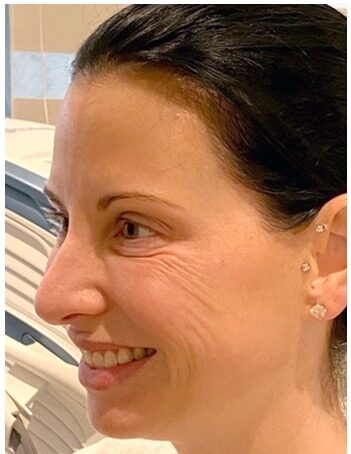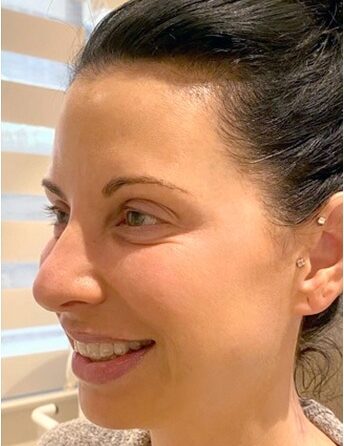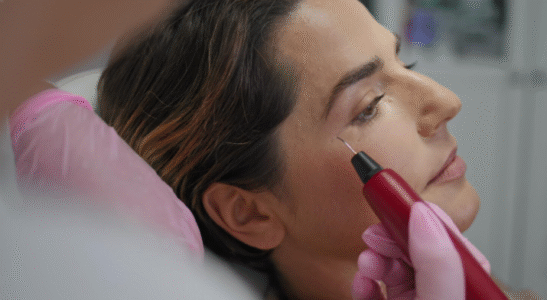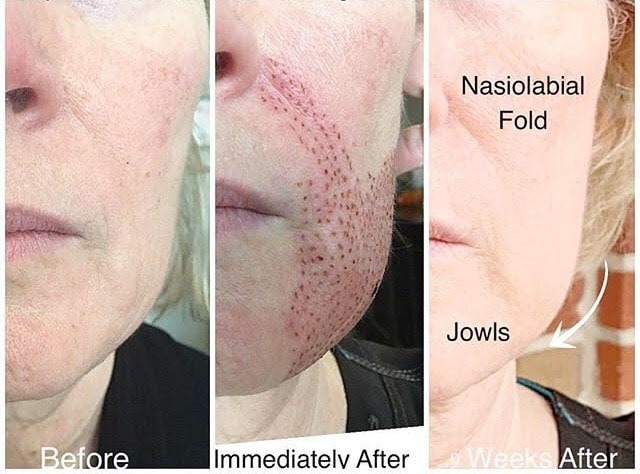Plasma Pen Treatment
Plasma pen treatment is a non-surgical cosmetic procedure that tightens and rejuvenates skin using a handheld device that emits a targeted micro-electrical charge. The process, often called fibroblast therapy, creates a plasma arc that makes tiny, controlled injuries to the skin’s outer layer. This stimulates the body’s natural healing response, which includes the increased production of collagen and elastin.
What a Plasma Pen Treats
- Around the eyes: Reduces hooded or sagging eyelids, fine lines, and crow’s feet.
- Around the mouth: Smooths fine lines, including “smoker’s lines” and nasolabial folds.
- Neck and jawline: Tightens loose skin and can be used for non-surgical neck and jawline lifting.
- Skin imperfections: Targets and reduces the appearance of acne scars, skin tags, and stretch marks.
What to Expect During and After Treatment
During Treatment
- A topical numbing cream is applied to minimize discomfort.
- The practitioner uses the plasma pen to create a pattern of tiny carbon crusts, or “dots,” on the skin’s surface.
- The procedure typically takes 30 to 60 minutes, depending on the treatment area.
After Treatment
- Downtime: Healing usually takes about one week, which is minimal compared to surgery.
- Side effects: Mild swelling, redness, and a sunburn-like sensation may occur. Carbon crusts will shed naturally within 5 to 7 days — avoid picking them.
- Aftercare: Keep the area clean, avoid direct sun exposure, and follow the skincare regimen recommended by your practitioner.
- Results: Some tightening is visible immediately, but optimal results develop over 8–12 weeks as collagen production increases. Results can last for years, with maintenance sessions if needed.
Considerations and Risks
- Professional treatment is essential: Only qualified and certified medical professionals should perform this treatment to avoid scarring or damage.
- Skin type restrictions: Not recommended for darker skin tones (Fitzpatrick IV–VI) due to hyperpigmentation risk.
- Potential risks: Small risk of infection if aftercare is not followed.
- Home-use devices caution: Professional devices such as Plasma Pen™ by Louise Walsh International and Subnovii are FDA-approved. Many at-home devices are unregulated and may carry risks.
How it Works
Prep and numb the skin
The skin is first cleansed and prepped for treatment. A topical numbing cream is then applied to the treatment area to minimize discomfort.
Generate the plasma arc
A handheld plasma pen device is held just above the skin’s surface without touching it. This action converts electrical energy into a plasma gas.
Cause controlled micro-trauma
The plasma gas creates a precise, controlled thermal micro-trauma on the epidermis (the top layer of skin). This process, called sublimation, instantly contracts and tightens the skin’s fibers in the targeted area. The treatment leaves tiny, visible carbon crusts or dots on the skin’s surface.
Stimulate collagen production
The micro-injuries trigger the body’s natural wound-healing response. This stimulates fibroblast cells in the dermis (the deeper skin layer) to produce new collagen and elastin, leading to a smoother, tighter, and more youthful-looking appearance over several weeks.


have a question?
Quick answers to questions you may have
Is plasma pen treatment safe?
A: When performed by a qualified, experienced professional using a high-quality, regulated device, the treatment is generally considered safe. However, the use of unapproved, at-home devices is very risky and can lead to burns, scarring, and hyperpigmentation. The FDA has issued warnings against certain unauthorized plasma pens.
How long is the recovery time?
A: Downtime can last 5 to 10 days for areas like the face or neck. Immediately after the procedure, you will have small carbon crusts that look like brown or black dots. These should be allowed to fall off naturally. Swelling and redness are also common and typically peak around day three before subsiding.
Who is a good candidate for this treatment?
A: Good candidates typically have mild-to-moderate skin laxity and wrinkles. People with lighter skin tones (Fitzpatrick skin types I–III) are generally the best candidates. Individuals with darker skin tones may be at higher risk for pigmentation issues. The treatment is not suitable for pregnant or breastfeeding people, or those with certain medical conditions.
How long do the results last?
A: Results are not permanent, as the natural aging process continues. However, the effects are long-lasting, with many patients enjoying their results for one to three years. Lifestyle factors like sun exposure and smoking can affect the longevity of results.

